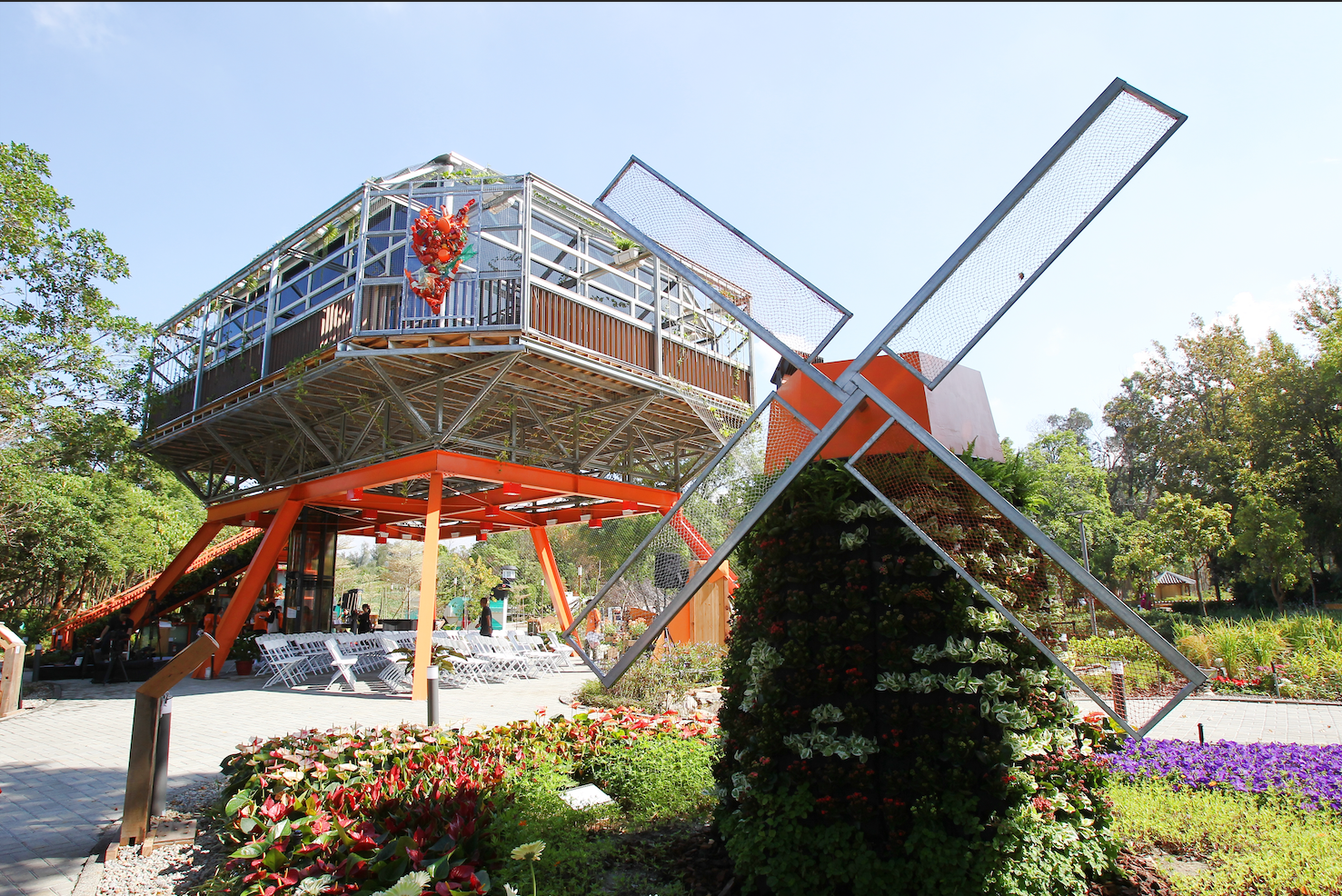
The Netherlands Trade and Investment Office (NTIO) partnered with 46 organizations from the Netherlands and Taiwan to build the Holland Pavilion at the 2018 Taichung World Flora Exposition. It was the first circular building in Taiwan, and the world’s first one to be checked by the British Standard Institution (BSI). It was also the world’s first to be dismantled. NTIO also launched the whitepaper, “Circular Construction in Taiwan: Insights from the Holland Pavilion at the 2018 Taichung World Flora Exposition” with Taiwan Construction Research Institute to outline six proposals for implementing circular construction in Taiwan.
( English provided by company. )
The Netherlands’ government wishes to reach a complete circular economy by 2050 and focuses on 5 top sectors, including the construction industry. Construction alone consumes 40% of global energy and 40% of the world’s raw materials while producing 25% to 40% of the total waste on earth. It is an industry in urgent need of reinvention towards a circular economy and one that will see quick wins.
Redesign
The 19 tons of heavy steel structure and 12 tons of light steel were bolted instead of welded for easier reuse. The 2,595 kilos of wood were revamped from the deformed beams taken down from the deserted warehouses of Taiwan Sugar Cooperation. Together with the 3,477 kilos of plywood made from recycled materials, the wood was pieced together with dowels instead of nails that enable future reuse. The aluminum structure and acrylic panels were modularized for maximum possibility of reuse. The key logo of the Holland Pavilion ,the tulip installation, was made of marine debris, recycled waste, and discarded old materials, and it could be used as a door somewhere else in the future. The blades of the windmill installation were made of the safety net reclaimed right on the construction site.
Innovation
The carpet at the pavilion was the world’s first recyclable one made by Niaga, Royal DSM from recycled materials, so it will not end up in landfills or incinerators. The powder coating by AkzoNobel was used to protect steel structures. Up to 90% of the residual from its production could be reclaimed to avoid waste. The sofa by FlexibleLove inside the pavilion was also made out of recycled paper and wood chaff.
Leasing Model
More than 200 lighting fixtures from Signify were rented. Together with ten 295W solar panels, one pneumatic elevator, and various plants were returned or transferred for further use instead of being discarded.
Cooperation
Apart from bringing together existing technologies from the Netherlands and Taiwan to accomplish the world’s first, the project also brought together the governments, academia, industries, and the general public to study, to discuss, and to research to accelerate the implementation of circular economy.
Benefits
- During the 173 days when the Holland Pavilion was open to the public, 3.5 million of visitors were estimated to have seen the project. It has received more than 300,000 people, and 2,115 volunteers have guided 366 tours. Awarded the AIPH Honorary Award.